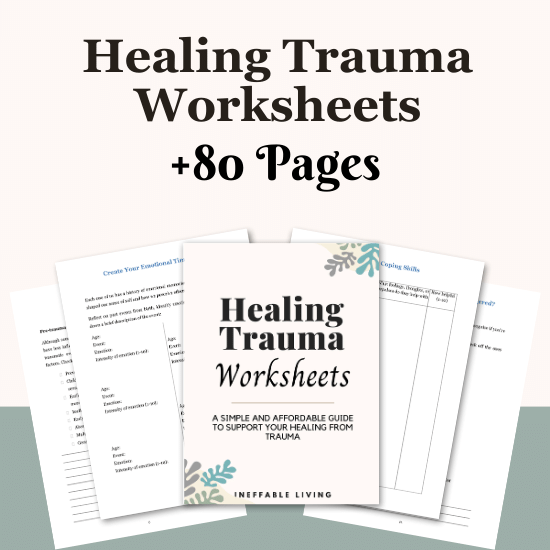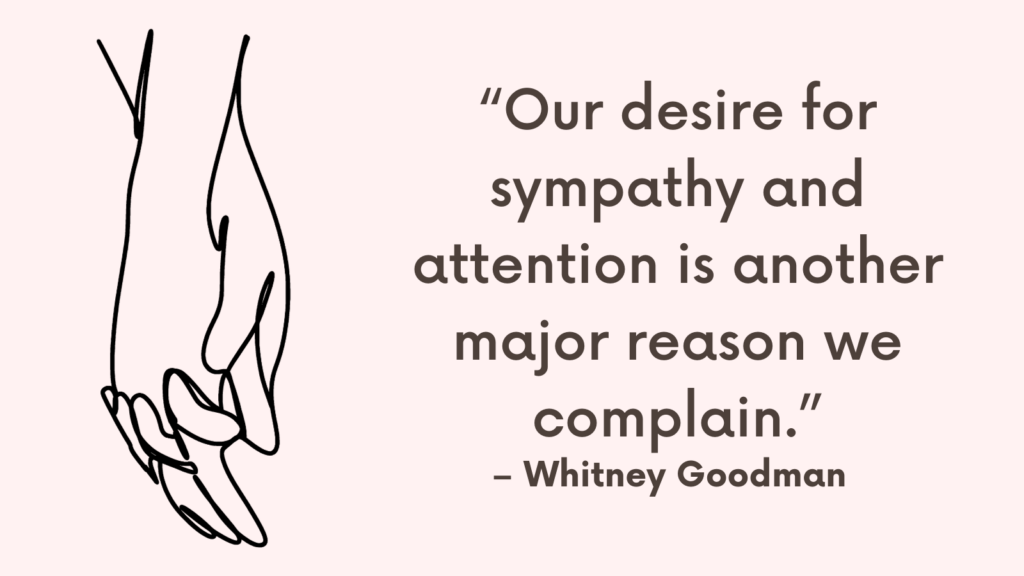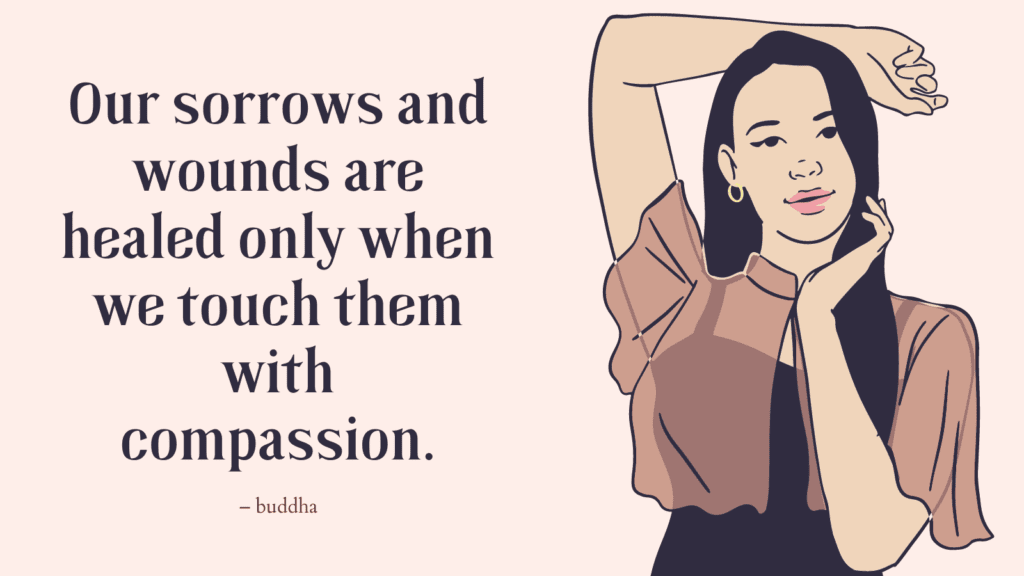In this post, you’re going to learn how to help someone with dissociation.
Signs of Dissociation
Dissociation is a coping mechanism that involves a disconnection between an individual’s thoughts, identity, consciousness, and memory.
Recognizing the signs of dissociation is essential in offering support and understanding to those experiencing it.
Here are some common signs of dissociation:
1. Depersonalization: Individuals may feel disconnected from their own body or self, as if they are watching themselves from outside. They may describe feeling unreal or robotic.
2. Derealization: This involves a sense of detachment from one’s surroundings, leading to a feeling of unreality or distortion of the environment. Individuals may perceive the world as foggy, dreamlike, or artificial.
3. Gaps in Memory: Significant lapses in memory, particularly related to traumatic events, may indicate dissociative amnesia. The individual may have no recollection of specific periods of time or experiences.
4. Identity Disturbances: Some individuals may experience shifts in their sense of self, identity, or personality. They may feel like different parts of themselves are separate and distinct, leading to confusion about their own identity.
5. Emotional Detachment: A marked reduction in emotional responsiveness or the inability to experience emotions at all can be a sign of dissociation. Individuals may appear numb or detached from their feelings.
6. Lost Time: Individuals may find themselves unable to account for blocks of time, leading to confusion or disorientation regarding how they spent that time.
7. Sense of Disconnection: Feeling disconnected from one’s own thoughts, sensations, or actions, as if they are not in control or that these experiences belong to someone else.
8. Trance-like States: Entering a trance-like state in which the individual appears distant, detached, or unresponsive to external stimuli.
9. Unusual Behaviors or Actions: Engaging in activities or behaviors without a clear memory of doing so, feeling like they are on “autopilot,” or finding objects at home they do not remember acquiring.
Related: Best 11 Grounding Techniques For Dissociation
Types of Dissociative Experiences
Here are the primary types of dissociative experiences:
1. Depersonalization
This type of dissociative experience involves feeling detached from one’s own body, thoughts, sensations, or actions.
Individuals may describe feeling as though they are observing themselves from outside their body, or as if their body or experiences are not real.
Some may report feeling robotic or like an automaton, leading to a sense of disconnection from their own self.
2. Derealization
Derealization refers to a sense of detachment from one’s surroundings, resulting in experiences of unreality or distortions in the perception of the external environment.
Individuals may describe feeling as though the world around them is foggy, dreamlike, artificial, or somehow altered.
This can lead to a profound feeling of being disconnected from the environment or the people within it.
3. Dissociative Amnesia
Dissociative amnesia involves significant gaps in memory, particularly regarding personal information, important life events, or traumatic experiences.
Individuals may have no recollection of specific periods of time, aspects of their identity, or certain events.
This type of dissociation serves as a protective mechanism, shielding the individual from overwhelming or distressing memories.
4. Identity Disturbances
Identity disturbances manifest as disruptions in a person’s sense of self, identity, or continuity of personal history.
Some individuals may experience dissociative identity disorder (DID), formerly known as multiple personality disorder, where distinct personality states or identity fragments emerge and take control of the individual’s behavior and consciousness at different times.
This can lead to confusion about one’s own identity and a fragmented sense of self.
5. Other Specified Dissociative Disorder (OSDD)
OSDD encompasses dissociative experiences that do not fully meet the criteria for dissociative identity disorder (DID) but still involve significant disruptions in identity, memory, and consciousness.
It may include experiencing identity fragmentation, recurrent gaps in memory, or a sense of detachment from one’s thoughts, feelings, or body.
Related: What to Do When Someone with PTSD Pushes You Away?
How to Help Someone with Dissociation?
Here are several strategies that can be effective in supporting someone who is experiencing dissociation:
1. Educate Yourself
It’s important to educate yourself about dissociation and its manifestations.
Understanding the different types of dissociative experiences, such as depersonalization, derealization, and dissociative amnesia, can help you provide better support.
2. Create a Safe Environment
Establishing a safe and supportive environment is crucial for someone experiencing dissociation.
Ensure that they feel physically and emotionally safe, and minimize triggers that may exacerbate their dissociative episodes.
3. Validate Their Experience
Validate the individual’s experiences without judgment.
Acknowledge their feelings and reassure them that it’s okay to experience dissociation as a coping mechanism.
Avoid minimizing or dismissing their feelings, as this can further isolate them.
Related: Complex PTSD And Nightmares: Top 9 Ways to Cope
4. Encourage Grounding Techniques
Help the person learn and practice grounding techniques to stay connected to the present moment.
This can include deep breathing exercises, mindfulness activities, or using sensory stimuli to anchor themselves in reality.
5. Develop a Safety Plan
Collaborate with the individual to create a safety plan that outlines strategies to manage dissociative episodes.
This may involve identifying trusted individuals to contact, creating a list of comforting activities, and outlining steps to take if the dissociation becomes overwhelming.
6. Foster Trust and Connection
Building trust and rapport is essential.
Encourage open communication and provide consistent support.
Demonstrating empathy and understanding can help the individual feel more connected and less isolated.
7. Encourage Professional Support
Encourage the individual to seek professional help from a therapist experienced in treating dissociation.
Therapy, particularly approaches such as dialectical behavior therapy (DBT), cognitive-behavioral therapy (CBT), or Eye Movement Desensitization and Reprocessing (EMDR), can be beneficial in addressing dissociative symptoms.
8. Address Underlying Trauma
Dissociation often stems from past trauma.
It’s important to address underlying trauma in a safe and therapeutic manner.
A qualified therapist can help the individual explore and process their traumatic experiences.
Related: 7 Trauma Release Exercises To Support Your Recovery After Trauma
9. Offer Practical Support
Offer practical assistance when needed.
This may include helping with daily tasks, providing transportation to therapy appointments, or offering to accompany the individual to social or potentially triggering situations.
10. Practice Patience
Dealing with dissociation can be challenging, both for the individual experiencing it and for those supporting them.
It’s important to exercise patience, as recovery from dissociation takes time and consistent effort.
11. Be Mindful of Triggers
Be aware of potential triggers in the person’s environment and support them in identifying and managing these triggers.
Minimizing exposure to triggers can help reduce the frequency and intensity of dissociative experiences.
12. Encourage Self-Care
Emphasize the importance of self-care and holistic well-being.
Encourage the individual to engage in activities that promote relaxation, self-nurturing, and emotional regulation.
Related: Best 10 Proven Ways to Heal From Childhood Trauma Splitting

Conclusion
Dissociation is a common defense mechanism used by the mind to cope with overwhelming stress or trauma.
It involves a disconnection between thoughts, identity, consciousness, and memory.
Helping someone with dissociation requires a compassionate and informed approach.
By providing a safe and validating environment, encouraging professional help, and offering practical support, you can play a significant role in helping individuals navigate their experiences of dissociation and work towards healing and recovery.



